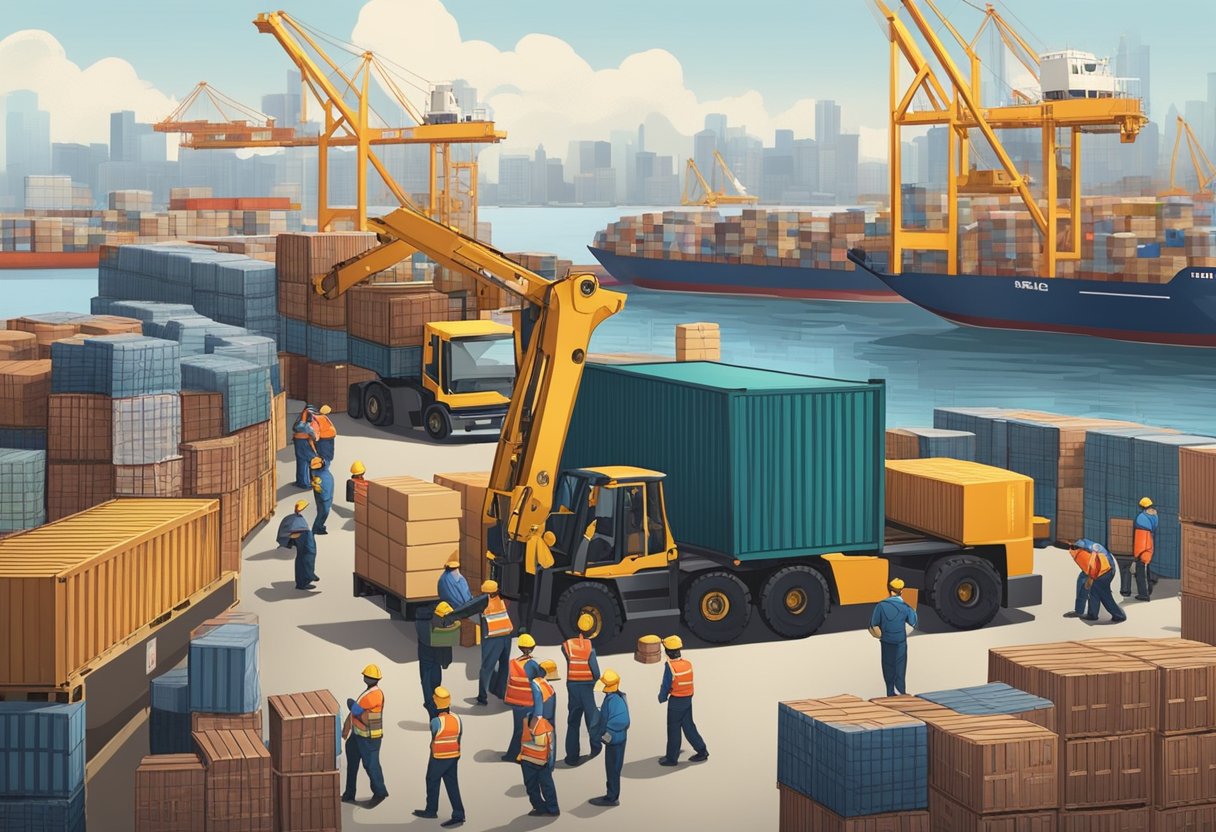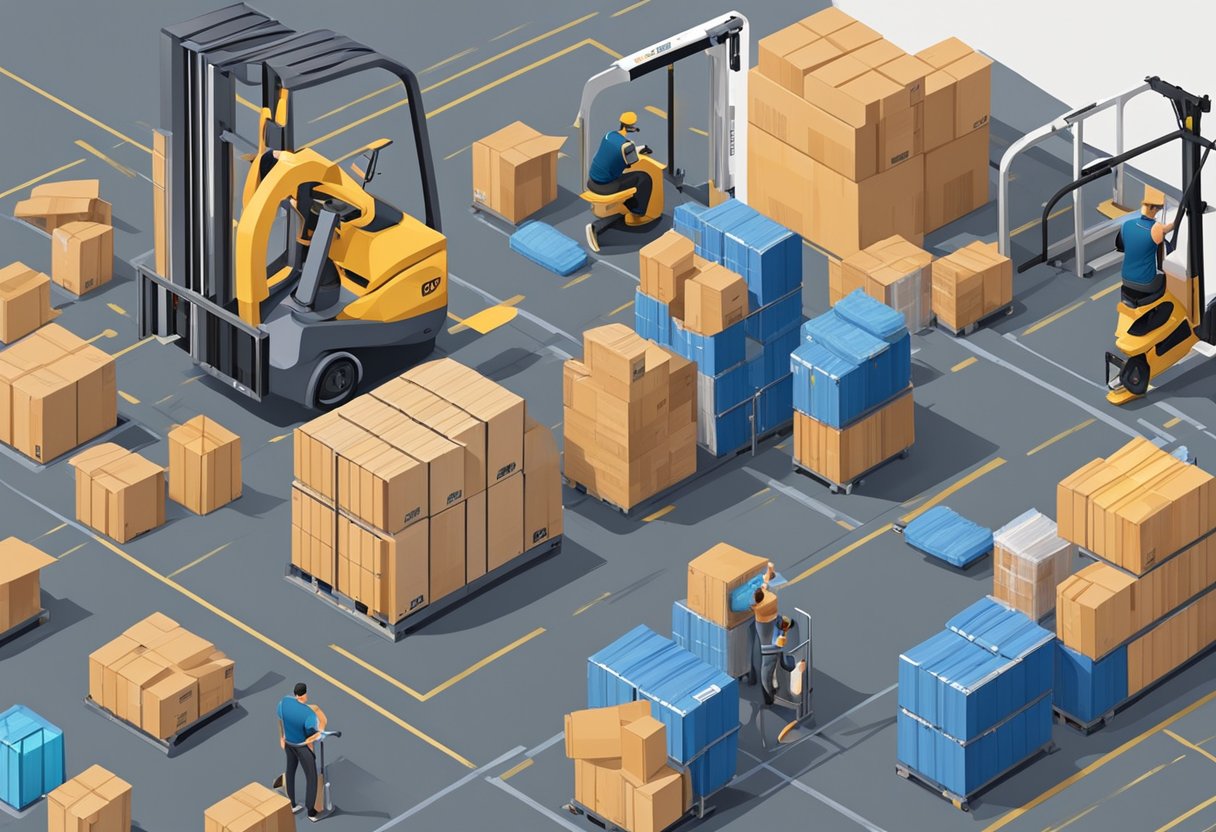Shipping accidents can occur at any time, and it is crucial for foreign traders to be prepared. This year, there have been numerous accidents during imports from China, making it even more important for traders to purchase insurance. Without insurance, traders risk significant financial losses in the event of an accident.
In this article, readers will gain valuable insights into foreign trade shipping insurance. The article will cover various topics, including the types of insurances commonly used in foreign trade, under which trade terms insurance should be purchased, how to calculate marine insurance premiums, what kind of marine insurance to buy, how to handle claims when cargo is damaged, and the documents required for a claim.
Key Takeaways
- Foreign traders should purchase insurance when shipping from China to avoid significant financial losses.
- There are different types of insurances commonly used in foreign trade, and traders should be aware of them.
- When cargo is damaged, traders must follow specific steps to handle the claim and provide the required documents.
What are the types of insurances commonly used in foreign trade?
Marine insurance is a type of insurance that covers goods transported by sea. It provides compensation for economic losses caused by natural disasters and accidents during transportation. There are three types of marine insurance available in China’s market.
The first type is Ping An Insurance, also known as FPA (free from particular average). This type of insurance covers all losses of goods caused by natural disasters and accidents, as well as part of the losses caused by disasters and accidents during transportation. The insurer is also responsible for compensating for related expenses.
The second type is WPA or WA (including individual marine damage insurance). In addition to the responsibilities covered by Ping An Insurance, the insurer is also liable for compensation for partial losses of goods caused by natural disasters.
The third type is all risks insurance. In addition to the coverage provided by Ping An Insurance and WPA, the insurer also takes responsibility for damages or partial losses caused by various external factors, such as shortage, leakage, bumping, hook damage, rain, dampness, mold, and odor. This insurance also includes additional risks such as war risk and stroke risk.
Many freight forwarders include some compensation clauses in their shipping prices. It is advisable to inquire whether the shipping price includes insurance clauses before finalizing the deal.
Under Which Trade Terms Should I Buy Insurance?
When buying goods, it is important to consider the trade terms under which the transaction is taking place. Two of the most commonly used trade terms are CIF and CIP. CIF stands for Cost, Insurance, and Freight, while CIP stands for Carriage and Insurance Paid to.
Under CIF, the seller is responsible for handling freight insurance for the buyer and pays the insurance premium. In case of any disagreement between the buyer and seller on specific insurance coverage, the seller only needs to obtain the minimum insurance coverage.
On the other hand, under CIP, the seller delivers the goods to its designated carrier and pays for the freight for transporting the goods to the destination. The seller also takes out insurance against the buyer’s risk of loss or damage to the goods in transit. However, the buyer bears all risks and additional costs after the seller delivers the goods.
In summary, when deciding on which trade terms to buy insurance, it is important to consider the terms of the transaction and the level of risk involved.
How to Calculate the Marine Insurance Premium?
Marine insurance premium is calculated based on the insurance amount and the insurance rate. The insurance amount is determined by multiplying the CIF invoice price (CIF price) by the invoice bonus rate, which is usually 10%. Therefore, insurance amount = CIF price * 110%.
In the absence of special regulations, the insurance amount is generally 110% of the CIF price, with special regulations not exceeding 120% of the CIF price. The international practice includes three types of maritime insurance clauses: ICC (A/B/C), which are British Insurance Association clauses, and CIC clauses, which are China’s own terms used by Chinese companies.
The factors that affect the fixed insurance rates include cargo type, voyage, packaging, terms used, insurance amount, policy model, and liability limit. Each item will affect the rate differently.
There are three types of insurance modes: separate orders, monthly orders, and annual orders. Separate orders refer to a single shipment of goods insured, while monthly orders involve monthly insurance declaration based on the agreed insurance rate, with no insurance premiums if no declaration is made. Annual orders are based on the year and require about 75% of the estimated premium to be paid in advance at the settlement time, with less replenishment and more non-refundable. The rates will be reduced sequentially for the above three methods.
In summary, calculating the marine insurance premium involves multiplying the insurance amount by the insurance rate. The insurance amount is determined by the CIF invoice price and the invoice bonus rate. The insurance rate is affected by various factors, including cargo type, voyage, packaging, terms used, insurance amount, policy model, and liability limit. Finally, there are three types of insurance modes: separate orders, monthly orders, and annual orders, each with its own unique features and rates.
What Type of Marine Insurance Should One Purchase?
When it comes to marine insurance, it is recommended to opt for an “all risks” coverage. This type of coverage offers protection against all or part of the loss of Ping An Insurance, WPA, and the insured goods in transit due to external reasons. External reasons refer to theft, failure to pick up goods, freshwater rain, short quantity, mixing, contamination, leakage, bumps, odor, moisture and heat, hook damage, packaging cracks, and rust damage.
It is important to note that strike insurance and war risk are not included in all risks coverage. Therefore, if the goods are being shipped to war-torn areas or countries that experience frequent strikes, such as India or South America, additional insurance should be purchased.
The premium for export cargo insurance is calculated as follows: CIF price × 110% × insurance premium rate. The rate of all risks for international shipping typically ranges from 0.08% to 0.3% thousandths. For most cargo owners, this may amount to several hundred yuan ($50-$100). It is advisable not to take big risks in order to save a small amount of money.
In summary, opting for an “all risks” coverage is the best choice for marine insurance, which will provide comprehensive protection for the goods in transit. Additional insurance should be purchased for goods being shipped to war-torn areas or countries that experience frequent strikes.
After the Cargo is Damaged, How to Deal with the Claim
When cargo is damaged during transportation, it is essential to take prompt action to deal with the situation. The following steps can be taken to handle the claim:
-
Contact the Local Shipping Company or Agent: As soon as the cargo damage is discovered, the consignee should contact the local shipping company or agent. The shipping company must provide a written confirmation of the cargo damage, which serves as crucial evidence for future claims to the shipping company and the insurance company.
-
Notify the Insurance Company: The insured should immediately inform the insurance company to inspect the damage. The insurance company will then fill in the “loss order” based on the damage. For goods that are obviously damaged, the scene should be kept as much as possible, and a certificate should be obtained from the carrier or the port tally department. For goods that are not obviously damaged, the consignee should hire a notary agency to inspect and issue an inspection report.
-
Temporarily Do Not Pick Up the Goods: Customers are requested not to pick up the goods temporarily. The shipping company will arrange for container inspection. It is essential not to consign the container back to the factory without notifying the shipping company and terminal. By returning the container to the yard, future investigations can be made more accessible, and unnecessary costs can be avoided.
In conclusion, taking prompt action after cargo damage is discovered is crucial to handle the claim effectively. By following the above steps, the consignee can ensure that the claim is settled in a timely and efficient manner.
Documents Required for Claim:
When filing a claim for cargo damage or difference, it is essential to provide all the necessary documents to support the claim. The following documents are required to file a claim:
-
Original Bill of Lading: This document serves as proof of the goods received by the carrier. It indicates the appearance and quantity of the goods received. If the goods cannot be submitted according to it when the goods are delivered, it indicates cargo damage difference.
-
Discharging Documents: These documents include tally slips at the port of unloading or cargo overflow and short orders, damaged orders. They are crucial documents to prove that cargo damage or cargo difference occurred during the ship’s transportation. If these unloading documents indicate cargo damage or cargo difference and are signed by the ship’s chief mate, but the same notation is not made on the receipt, it proves that the cargo damage or cargo difference occurred in transit.
-
Re-Ordering: When the ship has any doubts about the number or quantity of unloaded cargo, it is generally required to review or re-tally the cargo and make a “re-check” or “re-arrangement” note on the document proving the excess and shortness of the cargo. In this case, when making a claim, one must also provide the proof document of the review result or the tally’s reconciliation form. And use this as a basis to prove whether there is a shortage of goods.
-
Cargo Damage Inspection Report: When the damage to the goods is not obvious or easy to distinguish, or the degree of damage to the goods cannot be determined, an inspector with notarization qualification can be applied to inspect the goods. In this case, the “inspection certificate for damage & shortage” (inspection certificate for damage & shortage) issued by the inspector after the inspection must be provided when making a claim.
-
Commercial Invoice: This document contains a detailed list of goods shipped and their prices. It serves as proof of the value of the goods.
-
Packing List: This document contains a detailed list of the goods shipped, including their quantity and packaging. It serves as proof of the goods’ appearance and quantity.
-
Repair Order: It is used to indicate the cost of repairing damaged equipment, machinery, and other goods.
-
Relevant Documents: In addition, if there are other documents that can prove the cause of the freight accident, the extent of the loss, the amount of the claim, the location of the liability, etc., they should be provided. The claim documents must be complete, accurate, consistent, and consistent in content and must not contradict themselves.
Providing all the necessary documents is crucial to ensure a smooth and successful claim process. It is essential to ensure that all the documents are complete, accurate, and consistent to avoid any discrepancies that may result in the rejection of the claim.





